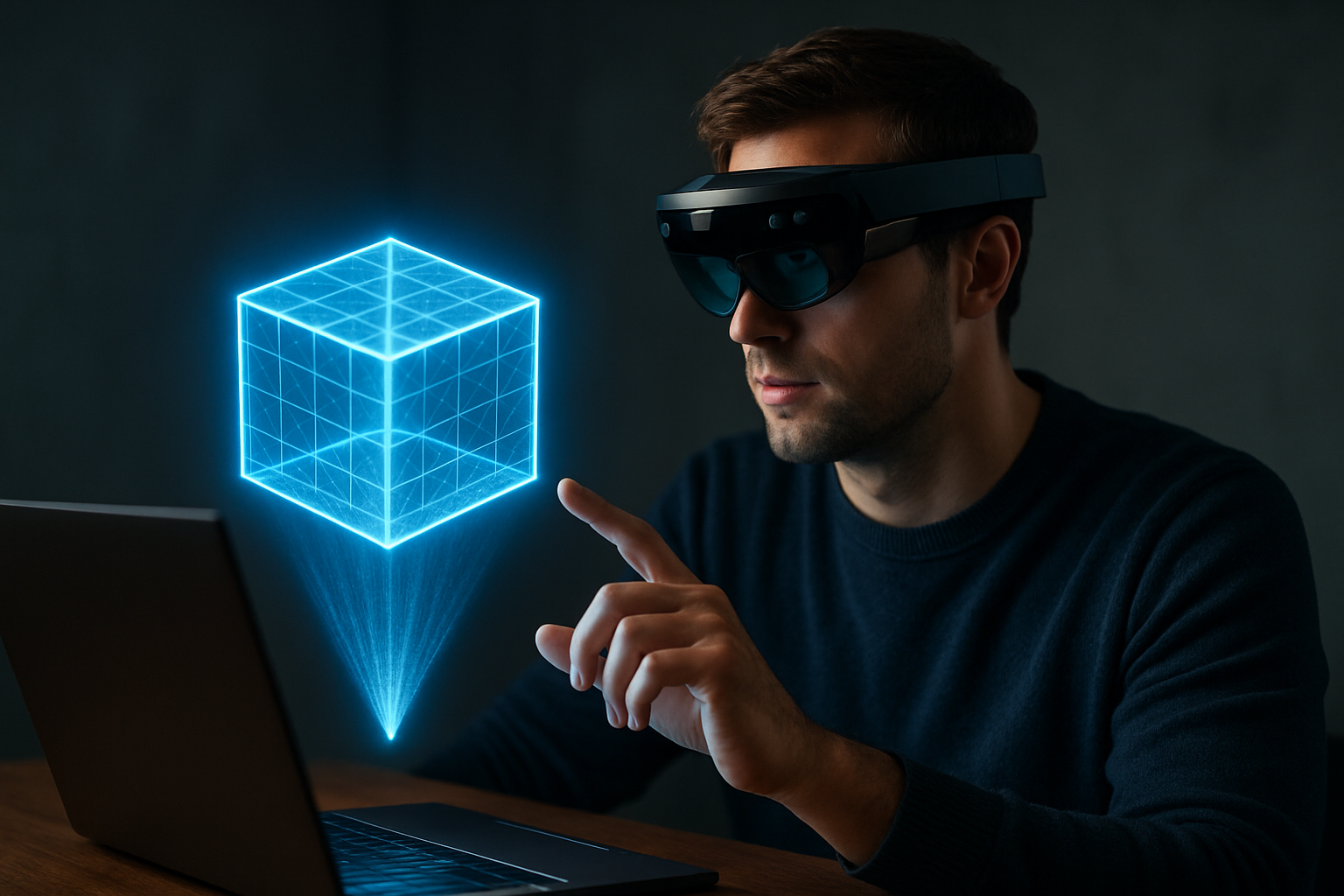Holographic Home Decor: The Future of Interior Design
Welcome to the cutting-edge world of holographic home decor, where technology meets artistry to transform living spaces into immersive, ever-changing environments. This innovative approach to interior design is revolutionizing how we perceive and interact with our homes, offering a blend of physical and digital elements that push the boundaries of creativity and functionality. Join us as we explore this exciting frontier in home styling, where reality and imagination seamlessly merge.

The concept of using holograms in home environments gained traction in the early 2020s, as advancements in projection technology and augmented reality made it more accessible and practical for residential use. Pioneering designers and tech companies collaboratively developed systems that could project high-quality, three-dimensional images within living spaces, effectively blurring the lines between the physical and digital realms.
The Mechanics Behind the Magic
At its core, holographic home decor relies on sophisticated projection systems and specially treated surfaces to create the illusion of three-dimensional objects floating in space. These systems typically consist of high-resolution projectors, motion sensors, and proprietary software that work in harmony to generate and manipulate holographic images in real-time.
The key to achieving a seamless holographic experience lies in the use of transparent screens or holographic foils. These materials are strategically placed within a room, often integrated into windows, walls, or standalone panels. When activated, the projectors beam carefully calibrated light onto these surfaces, creating vivid, three-dimensional images that appear to occupy physical space.
Transformative Design Possibilities
Holographic home decor opens up a world of design possibilities that were previously unimaginable. With the ability to project and manipulate digital content in three dimensions, homeowners can now:
-
Change their interior design at the touch of a button, switching between different styles, color schemes, and moods instantly.
-
Create virtual art galleries with rotating exhibitions of masterpieces or emerging artists.
-
Bring the outdoors in with realistic projections of natural landscapes, complete with dynamic lighting and weather effects.
-
Design interactive play areas for children, featuring educational content and imaginative scenarios.
-
Transform spaces for special occasions, tailoring the ambiance to suit parties, romantic dinners, or holiday celebrations.
Practical Applications in Modern Homes
While the concept of holographic decor may seem futuristic, it offers practical solutions to common design challenges. For instance, small apartments can benefit from the illusion of expanded space, with holographic windows offering ‘views’ of distant horizons or bustling cityscapes. Home offices can be enhanced with virtual whiteboards and collaborative spaces, facilitating remote work and creativity.
In the kitchen, holographic displays can project recipes, cooking tutorials, or nutritional information directly onto countertops or appliances. Bedrooms can be transformed into relaxing retreats with calming scenes or starry night skies projected onto ceilings and walls.
The Intersection of Technology and Personalization
One of the most exciting aspects of holographic home decor is its potential for personalization. Advanced AI algorithms can learn a homeowner’s preferences over time, suggesting design changes based on mood, time of day, or upcoming events. This level of customization extends to creating truly unique living spaces that reflect individual personalities and lifestyles.
Moreover, the integration of voice commands and gesture controls allows for intuitive interaction with holographic elements. Imagine adjusting the intensity of a virtual fireplace with a wave of your hand or verbally requesting a change in the holographic artwork adorning your walls.
Challenges and Considerations
As with any emerging technology, holographic home decor faces certain challenges. The initial cost of installation can be significant, although prices are expected to decrease as the technology becomes more widespread. There are also considerations regarding energy consumption and the need for regular maintenance of projection systems.
Privacy concerns have been raised, particularly regarding the potential for hacked systems to compromise personal spaces. Manufacturers are actively addressing these issues through robust encryption and secure software updates.
The Environmental Impact
Interestingly, holographic decor could have positive environmental implications. By reducing the need for physical decorative items, it could lower demand for manufactured goods and the associated resource consumption. Additionally, the ability to virtually ‘try out’ different designs before committing to physical changes could reduce waste in home renovations.
Looking Ahead: The Future of Holographic Homes
As holographic technology continues to evolve, we can expect even more innovative applications in home decor. Future developments may include:
-
Fully immersive rooms that can simulate any environment, from historical periods to fantastical realms.
-
Integration with smart home systems for seamless control of both physical and holographic elements.
-
Holographic furniture that can change shape and function based on needs.
-
Interactive holographic pets and companions for enhanced home experiences.
Embracing the Holographic Revolution
Holographic home decor represents a paradigm shift in how we think about and interact with our living spaces. It offers unprecedented flexibility, creativity, and personalization, allowing homes to become dynamic reflections of their inhabitants’ desires and imaginations.
As this technology becomes more refined and accessible, it has the potential to redefine the very concept of interior design. The homes of the future may no longer be static environments but fluid, ever-changing spaces that adapt to our moods, needs, and dreams.
While holographic decor may seem like a distant dream, it’s rapidly becoming a tangible reality. As we stand on the brink of this exciting new era in home design, one thing is clear: the future of our living spaces is bright, dynamic, and holographically enhanced.





